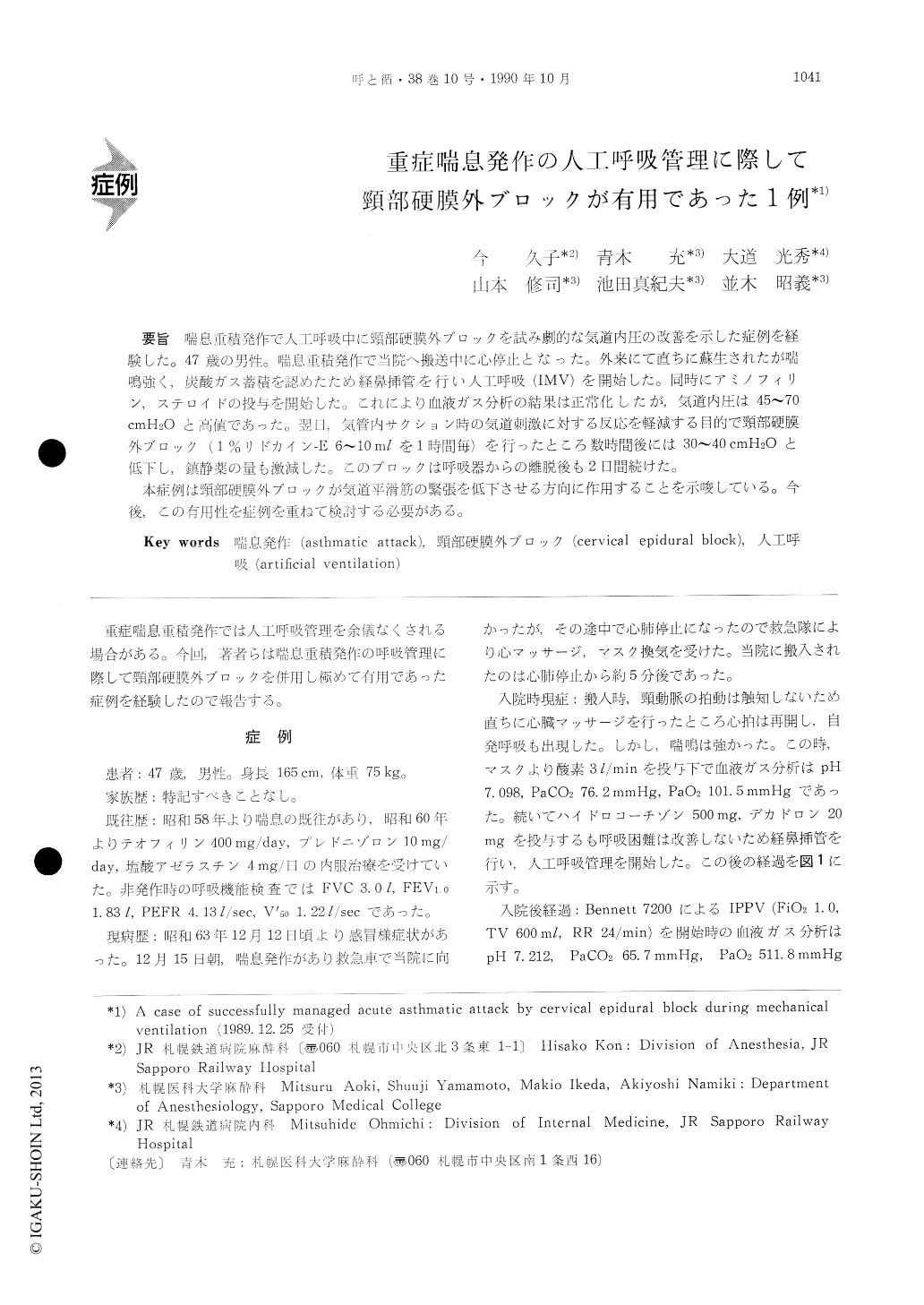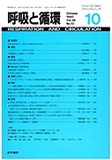Japanese
English
- 有料閲覧
- Abstract 文献概要
- 1ページ目 Look Inside
喘息重積発作で人工呼吸中に頸部硬膜外ブロックを試み劇的な気道内圧の改善を示した症例を経験した。47歳の男性。喘息重積発作で当院へ搬送中に心停止となった。外来にて直ちに蘇生されたが喘鳴強く,炭酸ガス蓄漬を認めたため経鼻挿管を行い人工呼吸(IMV)を開始した。同時にアミノフィリン,ステロイドの投与を開始した。これにより血液ガス分析の結果は正常化したが,気道内圧は45〜70cmH2Oと高値であった。翌日,気管内サクション時の気道刺激に対する反応を軽減する目的で頸部硬膜外ブロック(1%リドカイン-E 6〜10mlを1時間毎)を行ったところ数時間後には30〜40cmH2Oと低下し,鎮静薬の量も激減した。このブロックは呼吸器からの離脱後も2日間続けた。
本症例は頸部硬膜外ブロックが気道平滑筋の緊張を低下させる方向に作用することを示唆している。今後,この有用性を症例を重ねて検討する必要がある。
A 47-year-old male suffering from an acute asth-matic attack was admitted in the morning. He was arrested on arrival. Following successful resuscita-tion, he was treated by using controlled ventila-tion with a Bennett 7200 respirator. Before start-ing mechanical ventilation, he was physically ex-hausted and had carbon dioxide retention (PaCO2 76.2mmHg). The patient received dexamethazone 40 mg/day and theophylline 400mg/day during the first 4 days. Despite the decrease in PaCO2 follow-ing mechanical ventilation, cycling pressure remai-ned high (up to 50~70cmH2O) even after 24 hours. Because of the risk of barotrauma due to high cycling pressure, we conducted cervical epidural block to reduce airway hyperreactivity to the en-dotracheal tube and endotracheal suctioning. Sixto 10ml of lidocaine with 1 : 200, 000 epinephrine was administered every 1 or 2 hours. Within 4 hours after epidural block, airway pressure de-creased to 30~40cmH2O. Since then, requirements of sedative (diazepam) have decreased greatly to 10mg/day. The patient was successfully extubated 4 days after admission. Finally, epidural block was continued for 6 days without any complication.
We do not know how cervical epidural block works to reduce airway pressure. It might be beneficial to manage patients artificially ventilated during asthmatic attack.

Copyright © 1990, Igaku-Shoin Ltd. All rights reserved.


